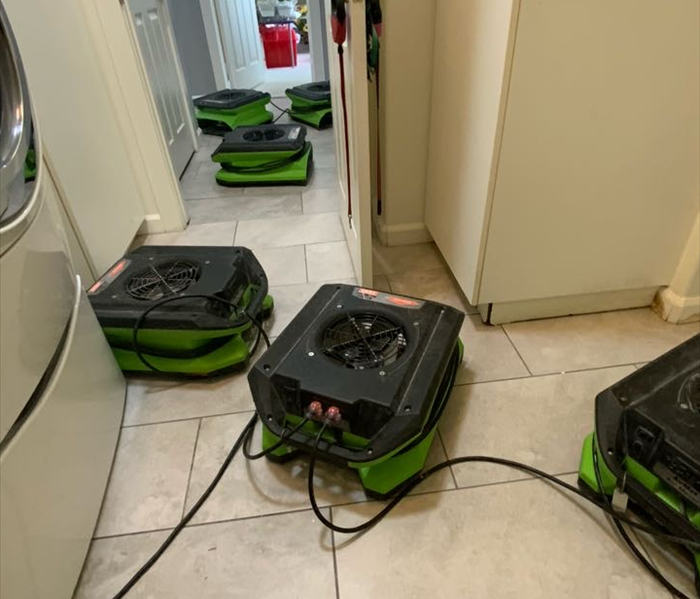Effective Strategies for Drying Out a Water-Damaged Home or Building
5/30/2023 (Permalink)
Safety should always be your top priority when embarking on the task of drying out a water-damaged home or building. Taking the right steps is crucial in removing moisture and repairing any damage caused by water. Water damage can have various adverse effects, such as material deterioration and electrical hazards. To ensure a safe and successful drying process, follow these tips:
Prioritize Safety: Before you begin, make sure to prioritize safety measures to protect yourself and others. Turn off the power supply to the property and check for any gas leaks. If you have concerns about the structural integrity or your personal safety, consult a professional before entering the premises.
Document the Damage: Take photographs of the water damage before you start the cleanup process. This documentation will be valuable when communicating with your insurance company.
Address Immediate Repairs: Make temporary repairs to roofs and windows to prevent further water infiltration. Use materials like tarpaulin, 30- or 90-pound felt paper, or plywood covered with tarpaper. These repairs should be temporary and last for approximately six months.
Begin in the Attic: Start the drying process in the attic. Remove any wet insulation and replace it since damp insulation loses its effectiveness. Discard any items that have been soaked by water to avoid damaging the ceilings below. Open windows and vents to facilitate airflow, and use fans cautiously if you're concerned about the electrical system.
Inspect Ceilings: Thoroughly inspect the ceilings in each room. Look for bulges indicating water accumulation. If you find a bulging ceiling, carefully create holes to release the water into a bucket. Be cautious not to disturb asbestos or lead paint, which may be present in older structures.
Remove Saturated Furniture and Carpets: Eliminate any furniture or carpets that have absorbed water. Removing these items reduces moisture levels in the home. Also, take out any sheet vinyl or linoleum flooring to enhance drying. If you notice floorboards warping, place weights on them to minimize distortion. Additionally, remove insulation from beneath the floorboards to allow proper airflow throughout the house.
Patience and Time: Drying out a flooded home or building can be a slow process. Evaporation takes time, but by following these steps diligently, you can expedite the drying process.
- Call SERVPRO of Palm Desert: The last step is to begin your water damage restoration by calling your local SERVPRO of Palm Desert. Let our expert team takeover your water remediation needs, so we can make it "Like it never happened."




 24/7 Emergency Service
24/7 Emergency Service
